This entry was posted on sábado, julio 12th, 2014 at 10:38 and is filed under Etnopaisaje. You can follow any responses to this entry through the RSS 2.0 feed. You can leave a response, or trackback from your own site.

El búho real en Galicia. The owl in Galicia.
…………
El búho real en Galicia.
.
.
.The owl in Galicia.
————
Vamos a la tertulia del University college
……………..
Etnopaisaje.com
……….
Sabemos muy poco sobre el búho real (Bubo bubo) en el tercio norte peninsular, región donde parece ser una especie poco frecuente.
…………
En función de su gran potencia y tamaño el Búho real se alimenta de grandes presas, pero no desdeña pequeños mamíferos, ratones y musarañas, lo mismo que diminutos pájaros
..
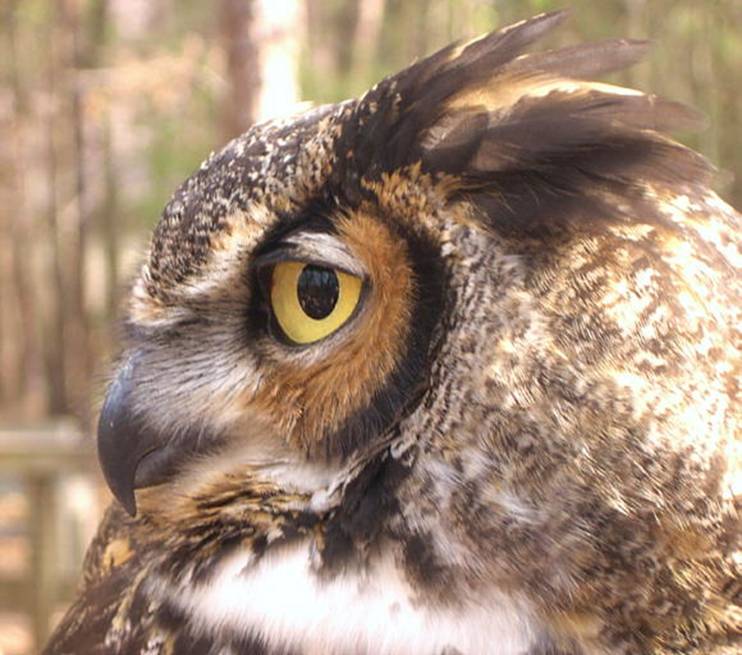
……..
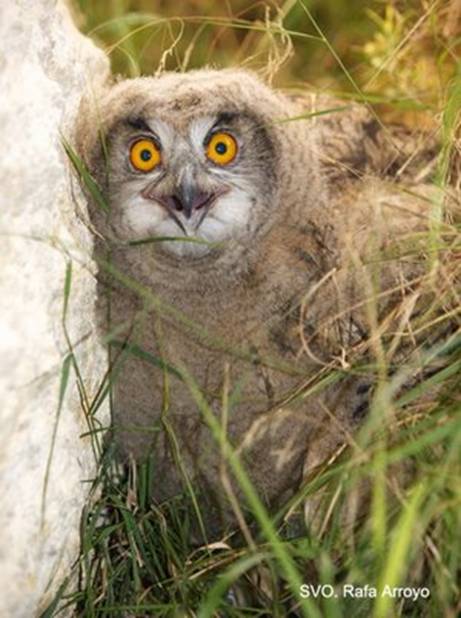
…………..
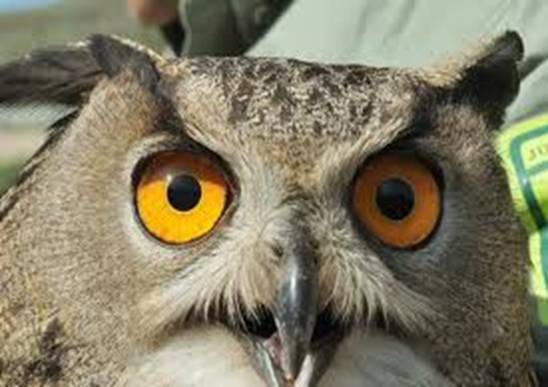
……………..
Al iniciar la caza, los búhos permanecen inmóviles en sus atalayas o posaderos, escuchando los sonidos que producen los roedores al desplazarse, conejos al rozar las hojarascas o algún ave al mover sus plumas en sus dormideros.
………..
También suele mover sus plumas contra las ramas para asustar algún conejo y poderlo capturar. En oscuridad absoluta el modo de localizar a sus presas es mediante el oído «como si estuviera dotado de radar».
………..
Normalmente, después de localizar a su víctima, trata de fijar su posición. La visión estereoscópica le permite informarse con exactitud de la distancia que le separa de su presa.
……..
Una vez fijada la posición de la presa, se lanza hacia ella con aletazos potentes que terminan en un deslizamiento con las alas semiplegadas. La estructura del plumaje hace el vuelo insonoro.
………..
De lo que el buho se alimenta es fácil averiguarlo ya que si conseguimos una «egragópila» (especie de pelota o cilindro de diferentes tamaños y color oscuro compuesta por pelos, plumas, huesos, uñas que el ave no puede digerir), producida en el interior del estomago y expulsado por la boca.
…………….
Se podrá conocer, por la composición de la misma, los restos de las presas capturadas que no ha podido digerir. Esta se encuentran en el suelo de los dormideros de estas preciosas aves.
………
.
.
.. We know very little about the eagle owl (Bubo bubo) in the northern third of peninsular region appears to be a rare species.
…………
Depending on their size and the powerful owl feeds on large prey, but does not disdain small mammals, mice and shrews, like tiny birds
……..
When you start the game, owls remain motionless in watchmen, listening to the sounds produced by moving rodents,
. ………..
It also tends to move their feathers against the branches to scare a rabbit and being able to capture. In complete darkness how to locate their prey is by ear «as if equipped with radar
……..
Normally, after locating his victim, try to fix your position. Stereoscopic vision allows you to learn exactly the distance that separates him from his prey. After fixing the position of the prey, it lunges with powerful wingbeats ending in a glide with wings semiplegadas. The structure of flight feathers does not hear
…….
What the owl feeds is easy to find out because if we get a «egragópila» (sort of ball or cylinder of different sizes and composed of dark hair, feathers, bones, nails the bird can not digest), produced in the inside the stomach and expelled through the mouth
……..
We will know by the composition of it, the captured prey remains that could not digest. You can find them on the floor of the roosts of these beautiful birds.
…….
…………………………
Recogemos algunas partes del artículo de Quercus, del 2006,a modo de resumen
…
.
.
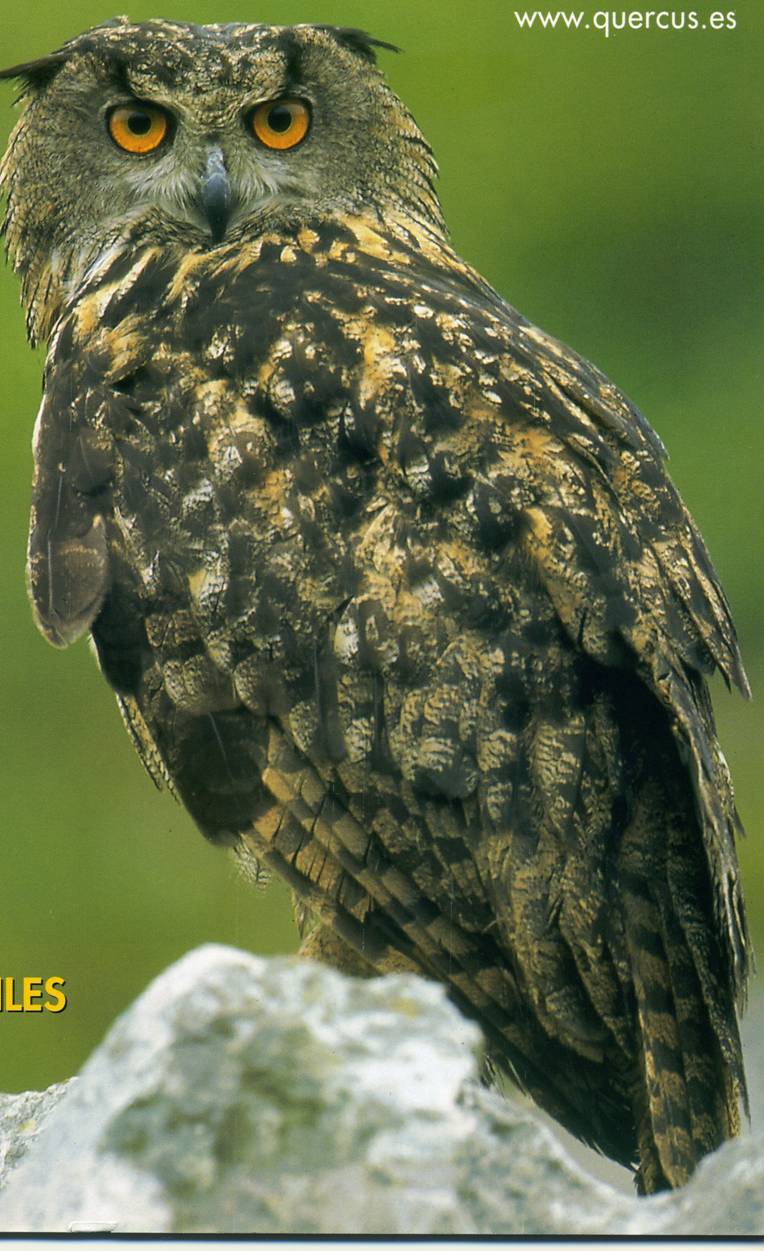
………..
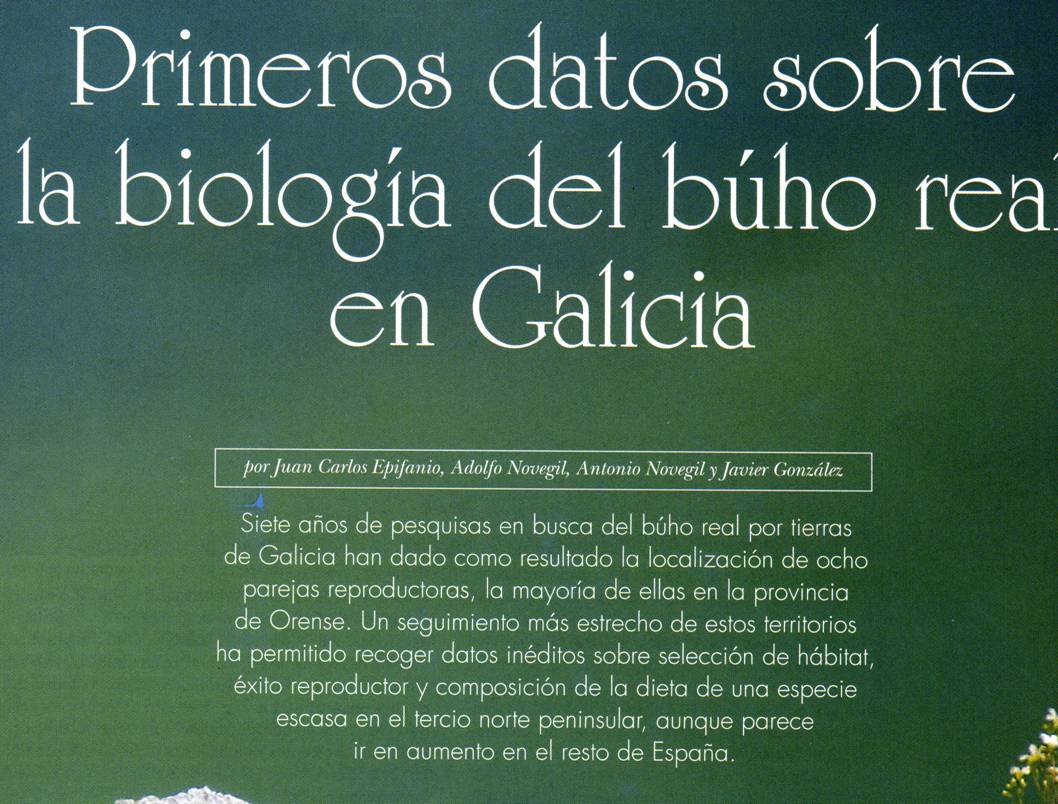
………….
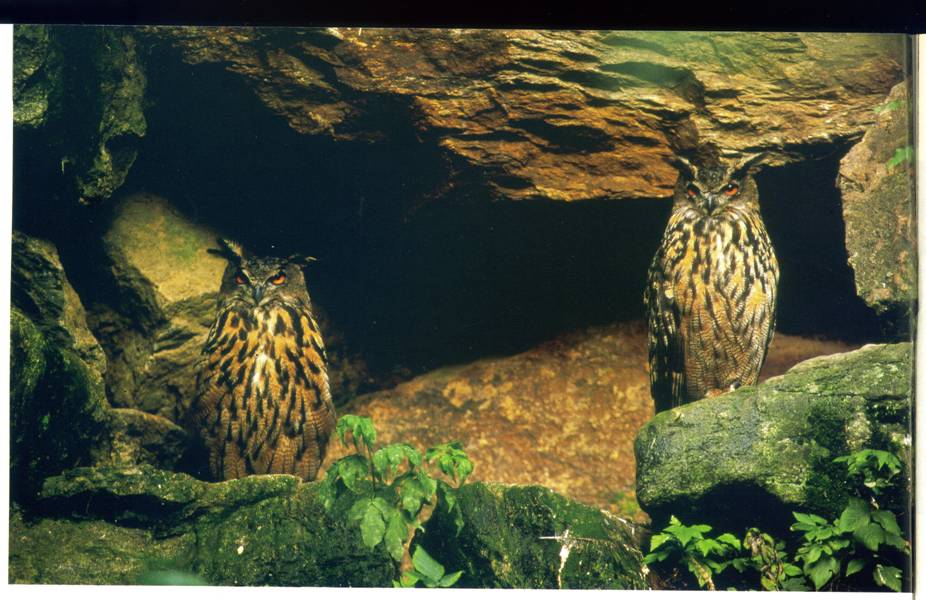
…………
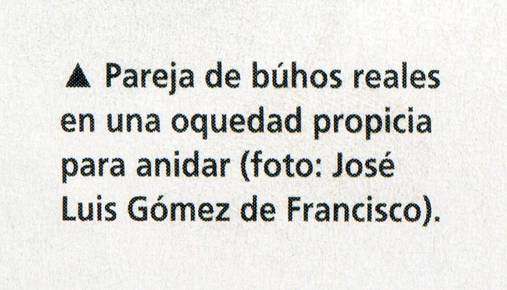
……………
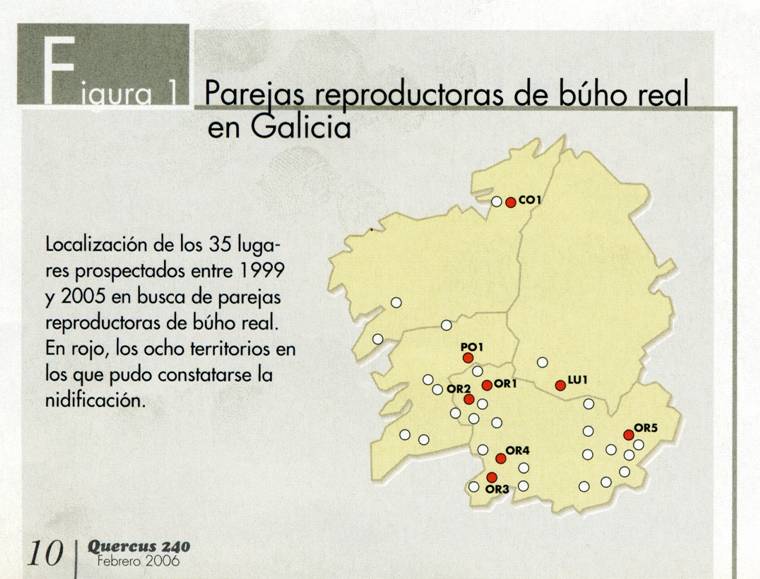
……….
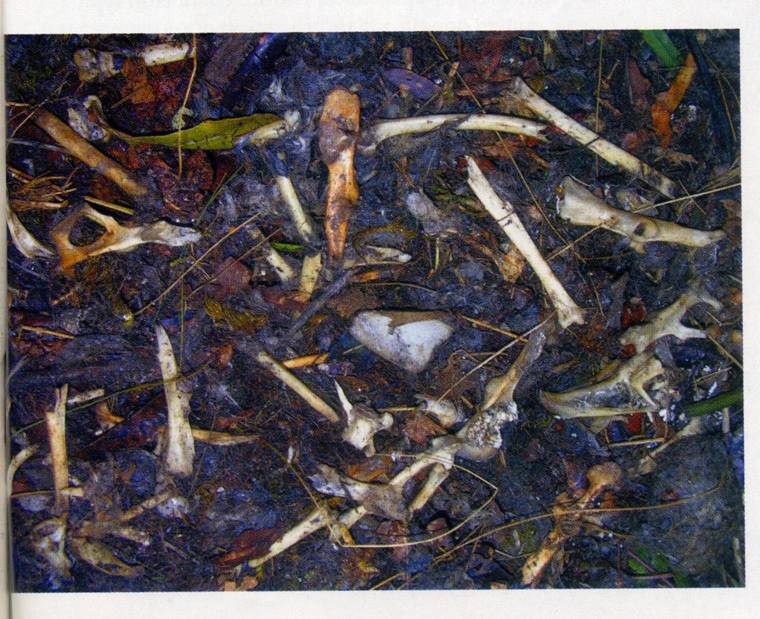
………
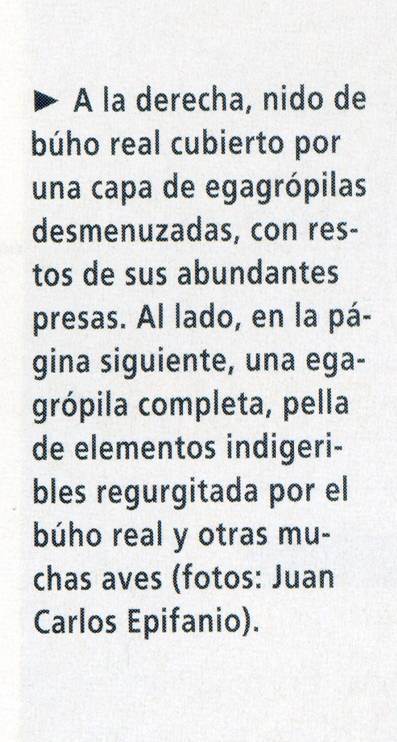
………..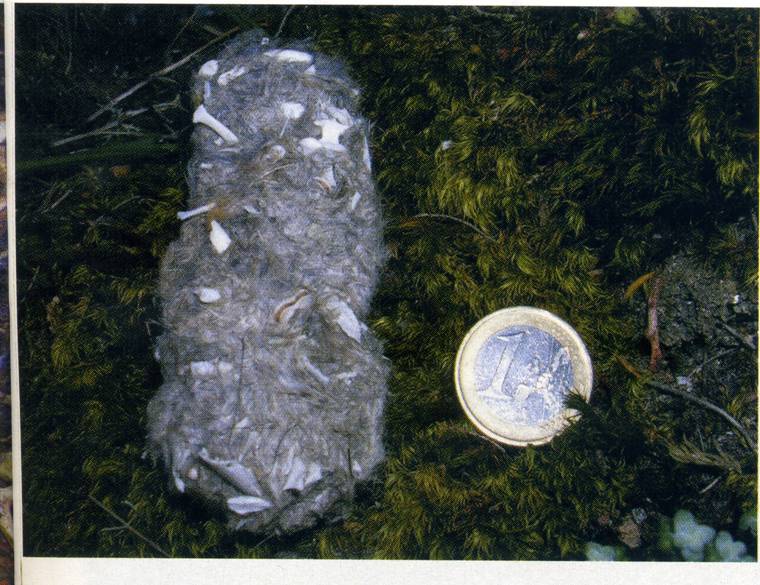
……………………….